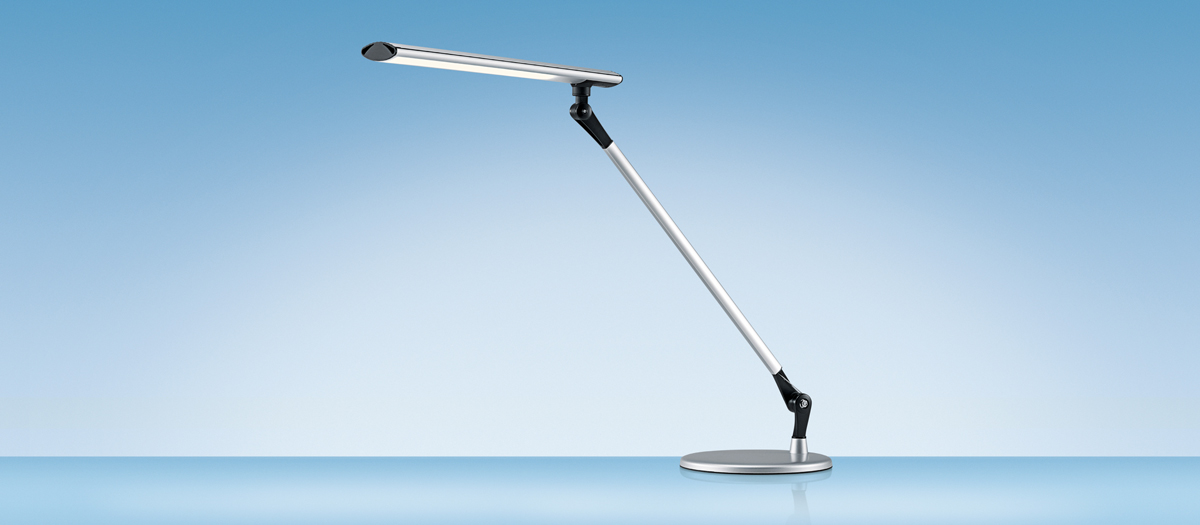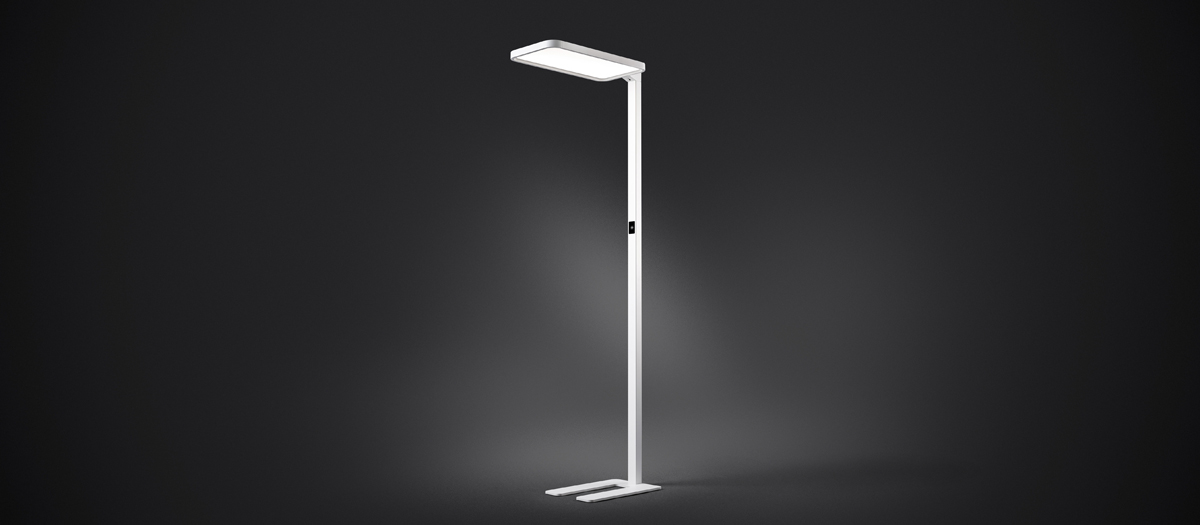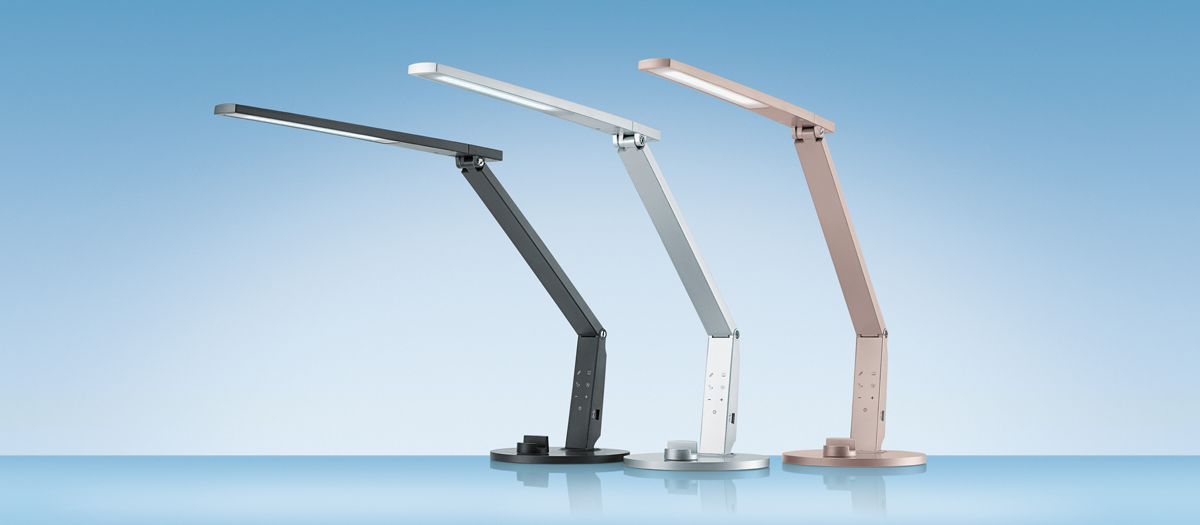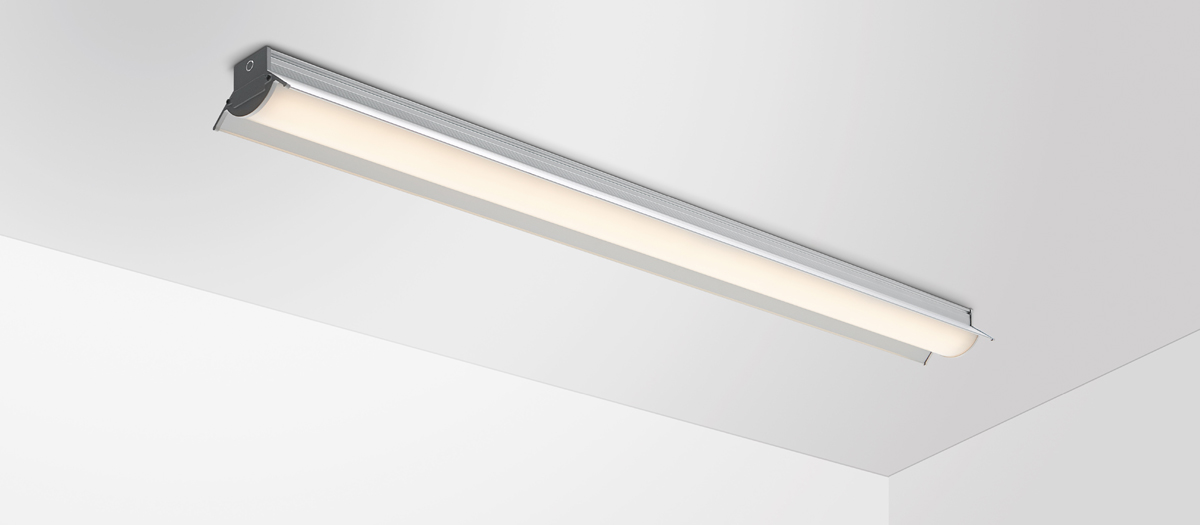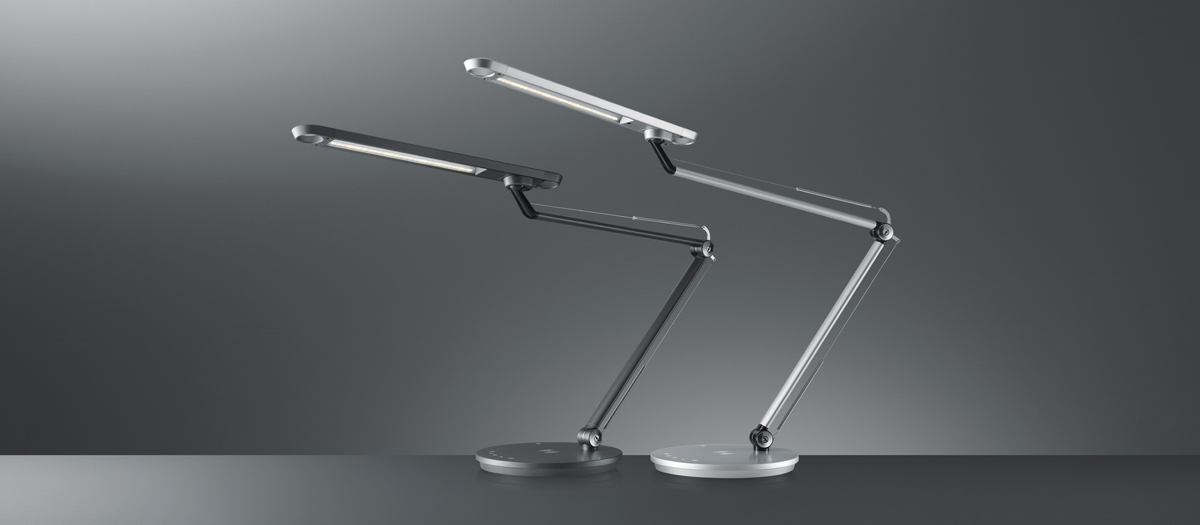Lamps
Today, the Hansa brand is more a «world of light» than a «world of office». Although we do still offer a range of desk accessories under the Hansa brand name, Hansa has now become one of the leading manufacturers of table lamps and floor lamps, and has recently expanded its range to include ceiling lights for offices and homes too.
Lighting knowledge
Light is beneficial to health
The light of the sun has an invigorating, inspiring and stimulating effect on us humans. The sun has a positive influence on our psyche and thus on our health in general. Humans need light to live. In addition to natural light, artificial light also takes on the characteristics of the sun. High-quality lighting at home or at the workplace can be just as conducive to concentration and motivation.
The right light at the workplace
The modern workplace is described in standards. Safety, ergonomics, acoustics and also lighting are clearly regulated in them. Employers must provide a flawless environment. After all, only where there is optimal, healthy lighting can one assume higher motivation and a resulting higher performance. Poor, inadequate work lighting, on the other hand, quickly leads to tired eyes, headaches and even unpleasant tension. A balanced, controllable relationship between daylight, general basic lighting and individually controllable lighting conditions through desk luminaires, among other things, is crucial. Everyone should be able to create the most pleasant light for him or her at the desk and thus have optimum visual comfort. Technical criteria should also not be disregarded: Energy efficiency, illuminance, colour temperature, as well as colour rendering, are important when choosing a luminaire.
Criteria for buying the right luminaire
- Application (living room, office, basic lighting area)
- Technology (energy efficiency, no glare)
- Ergonomic design
- Material
- Size
- Features (projection, dimmer, etc.)
- Price
Lumen
Lumen (lm) is the unit for the so-called luminous flux of a light source. It allows conclusions to be drawn about the brightness of the lamp. The luminous flux indicates how much light a light source emits in all directions. When incandescent bulbs were still used exclusively, their brightness was identified by their power consumption in watts. Nowadays, manufacturers must specify how many lumens a lamp emits.
Watt
The unit watt provides information about the power of a lamp and how much electricity it consumes. In the past, the more watts indicated, the brighter the lamp.
Lux (E)
Lux is the unit of measurement for illuminance. It indicates how much luminous flux (lumen) is incident on a given surface. For an illuminance of one lux, a luminous flux of 1 lumen uniformly illuminates an area of 1 m². In an office, for example, at least 500 lux of illuminance is needed to work at a desk. It is important to understand that illuminance does not reflect the impression of brightness, as this depends largely on the properties of the illuminated material.
Candela
Candela is the unit for luminous intensity. It expresses how much luminous flux is applied to a certain space napkin. Most luminaires, especially those with LED lamps, do not emit the same luminous intensity in all directions. The luminous intensity is only meaningful in connection with the radiation angle. The luminous intensity of incandescent lamps is uniformly distributed in almost all directions. The luminous intensity of bee-shaped LED lamps, on the other hand, is often distributed over a solid angle range between 180 and 270 degrees. If two luminaires have identical lumen values but different beam angles, the luminous intensity will be higher for the luminaire with the smaller beam angle.
Kelvin (K)
Kelvin is the unit of measurement for colour temperature. The higher this value, the more similar the artificial light is to daylight.
Colour rendering index (Ra)
The colour rendering index of a luminaire can be used to estimate how faithfully it reproduces the colours of its surroundings. The more faithfully the colours of the objects in the illuminated area are reproduced, the higher the colour rendering index (maximum value: RA 100). If you value true-to-life colour rendering, you should only buy luminaires whose colour rendering index is at least Ra 90.
UGR value
The UGR value stands for "Unified Glare Rating". It refers to the psychological glare effect of a lighting system in a certain observer position. The values are classified on a scale from 10 (= no glare) to 30 (= high glare). For offices, the UGR value must not be higher than 19. This value indicates that around 65% of people do not feel disturbed by the light. At the same time, however, this means that the remaining 35% are negatively influenced by light sources. The UGR value cannot be measured, but only calculated. It is not a fixed property of a luminaire, but depends on numerous environmental factors.
LED driver
For LED luminaires to work properly, they need a ballast - these are also called drivers. LED lamps operate on a constant, low DC. However, our power grid runs on alternating current. Therefore, a driver must be connected between the power grid and the lamp to regulate the current flow. A wrong or defective driver can be recognized by the fact that the LED lamp flickers, in this case the driver balances the current incorrectly. The driver can be located outside the luminaire (in the connector or separately). Or it may be built into the luminaire. LED retro fit lamps, i.e. light-emitting diodes with old-style sockets such as E27 or G9, are LEDs with an integrated driver. If an LED luminaire has defects, the LED driver is often the problem, as LEDs themselves are only sporadically damaged.
Average life of luminaires:
Mean rated life refers to the period of time from when the lamp is first turned on until only 50 percent of the lamps tested are still functioning properly. Thus, a statement of average rated life of 20,000 hours of operation on the packaging of an LED luminaire means that the test procedure has shown that after this period, half of all tested lamps have failed.
Rated or useful life of LED lamps:
The stated average life, rated or useful life for LED lamps quantifies the period from the time the lamp is put into service until the time when the average luminous flux (lumens) of all tested lamps is less than 70 percent. This means that the lamps have lost at least 30 percent of their brightness. This state of affairs is also referred to as degradation and says nothing other than that the light output has decreased. For this reason, some manufacturers also indicate light degradation as L70 on the product. Depending on the test procedure, information such as L50 (brightness less than 50%) or L80 (less than 80%) of the original brightness can also be found. However, LED lamps do not have any direct wear parts; at most, the driver can cause problems. Consumers can therefore, especially with bright LED lamps, continue to use them for years with sufficient brightness even with reduced luminous flux.
Through the day with LED lighting
Throughout the day, natural light changes in the range of 3,000 to 12,000 Kelvin. For millions of years, human activities have been aligned with the light of the sun. Particularly from a physical point of view, the rhythm is essential for maintaining human health. And yet, man's lifestyle habits are moving further and further away from it. Artificial light can replicate the dynamics of daylight with its many positive effects today. Today's LED lights make it possible to change the light colour and brightness continuously. In this context, one speaks of the HCL concept (Human Centric Lighting). This considers not only the visual, but also the emotional and non-visual effects of light. In most cases, HCL is understood to mean the adjustment of lighting according to the natural course of daylight. This involves not only the illuminance, but above all the changing colour temperature of the light.
That is:
Warm white light in the morning: 2000 - 3300 Kelvin
Cold white light around noon: 3300 - 5300 Kelvin
Warm white light towards evening: 2000 - 3300 Kelvin
Thus, warm white light below 3300 Kelvin has little blue content and therefore has a calming effect. It is the ideal light for bedrooms or for evenings at home to get ready for the night. For work, for example in the office, neutral white light between 3300 and 5300 Kelvin is ideal. Whereas many office lights are around 4000 Kelvin. 5000 Kelvin is more suitable for workshops. Daylight white, which starts at 5300 Kelvin, is suitable for factory hall, bright store lighting or outdoors.
Pictogram explanations for luminaires
Disposal and sustainability:
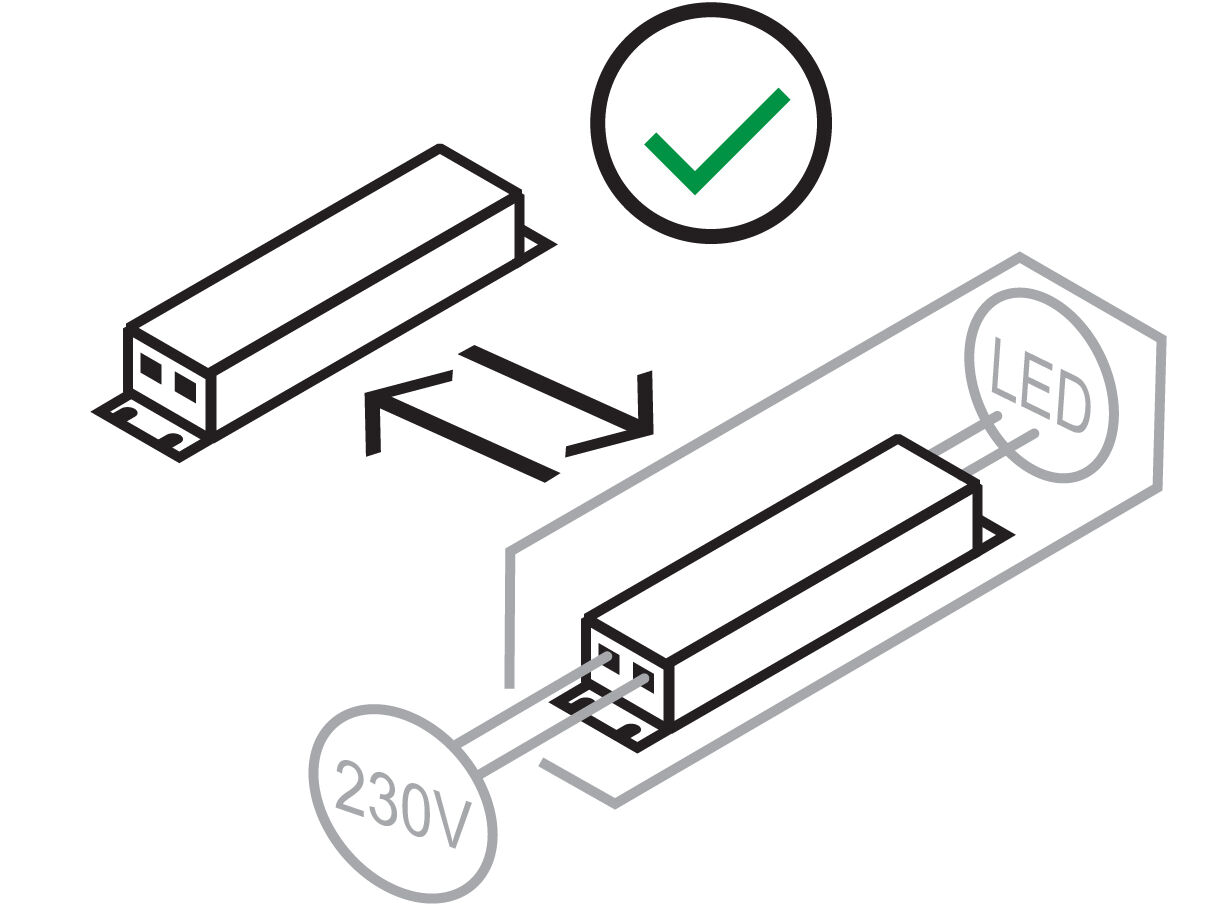
End user replaceable control gear
It can be replaced
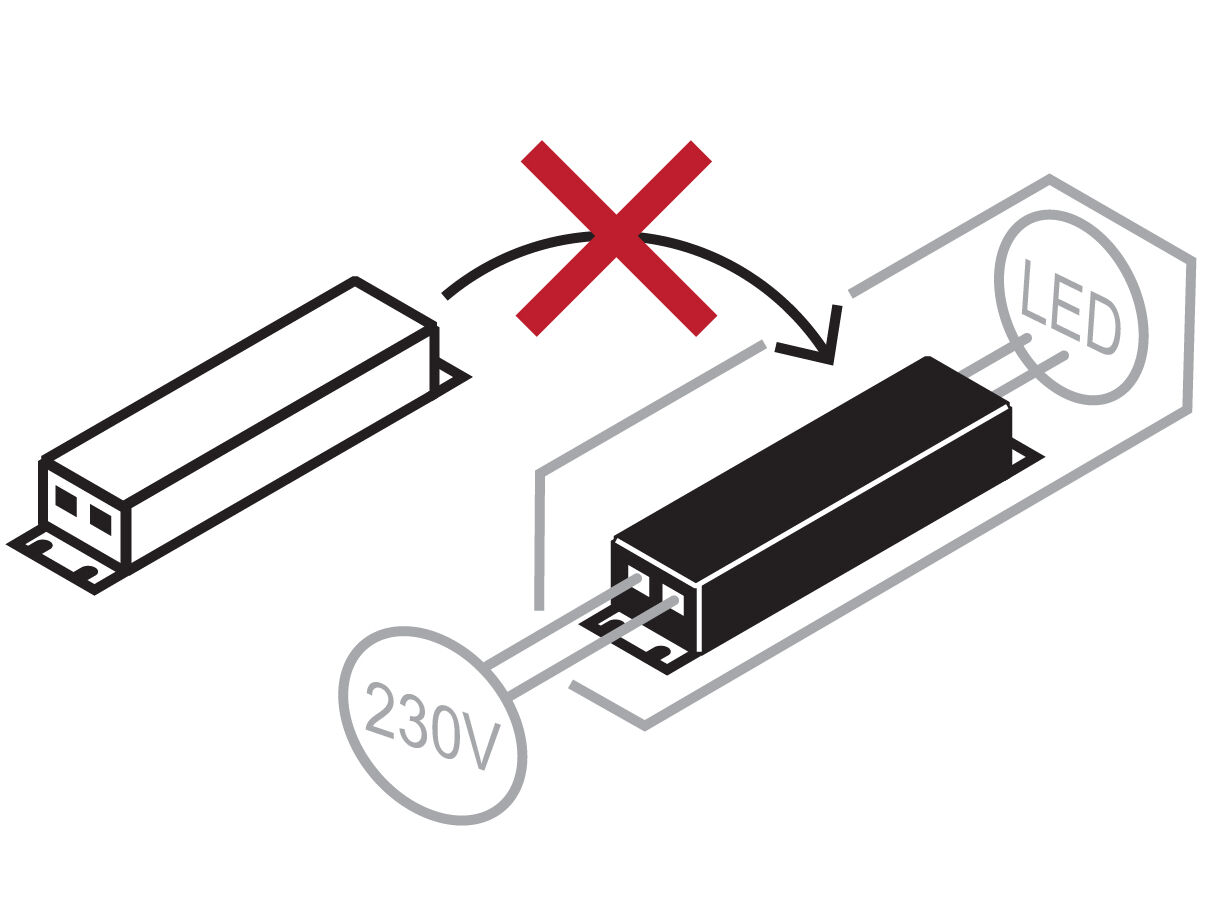
Non-replaceable control gear
It cannot be exchanged
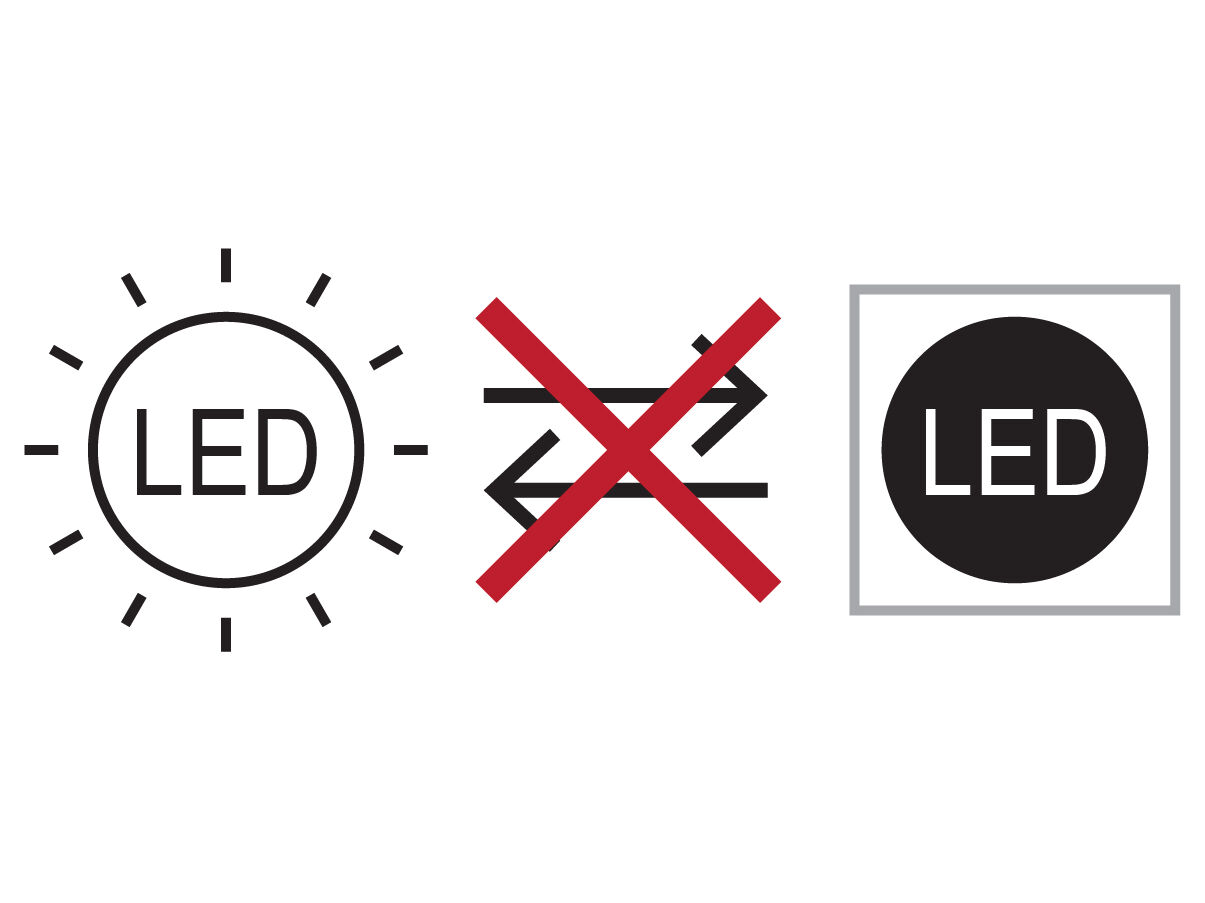
Non replaceable light source
The light source can not be replaced

The marked device is not to be disposed with normal household waste
It has to be collected or delivered to a collection point

Recycling codes provide information about the material used
01- PET: Polyethylene terephthalate (packaging material)




